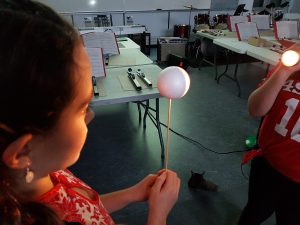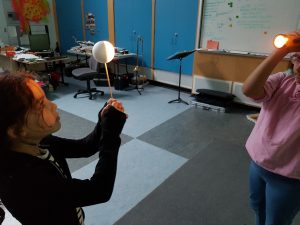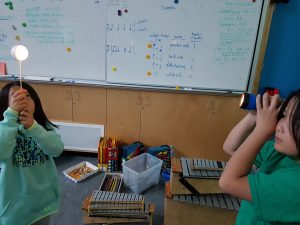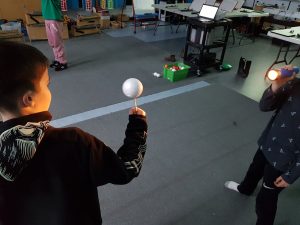This week we wondered, “Why doesn’t the Moon always look round?” We talked about how the Moon reflects the light of the Sun, learned the phases of the Moon, and experimented to figure out what causes the change in the Moon’s appearance.
See if you can see the moon in the sky this weekend! If you have binoculars, look through them together at the Moon. The best time for moon-gazing is when the Moon is half-bright/half-dark. The line that divides the dark (night side) of the Moon from the bright (day side) of the Moon is called the terminator. Along the terminator, shadows make it easier to see craters and mountains.
If you feel like comparing what you see to a map of the Moon, there’s a great map of the most visible craters here and a map of the dark gray areas known as seas here. The Moon’s seas are dry flat plains created billions of year ago by flowing lava. But early astronomers thought these dark gray areas might be filled with water and called them seas or maria (Latin for seas), and the name stuck.




Leave a Reply